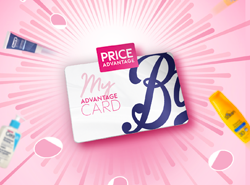ACNECIDE® TREATMENTS
Acne can be treated in a number of ways, depending on the severity of your symptoms. The benzoyl peroxide (BPO) in Acnecide® is an active ingredient that is applied topically (i.e. to the skin surface), and is used in the treatment of mild to moderate acne. It helps fight spots by killing up to 95% of the bacteria that causes acne. BPO dries up oiliness and deeply exfoliates dead skin cells to help unclog and reduce blocked pores.
For more serious forms of acne, you may want to consider speaking to a doctor who can prescribe prescription-strength treatments.
Acnecide® Face Gel & Acnecide® Face Wash Gel
• Leave-on or wash-off formats
• For the treatment of mild acne
• Clinically proven to help fight the bacteria that cause spots
• Helps unblock pores, blackheads and whiteheads
• Always read the label
Spots on the chest or back? Need a bigger pack size? Check out our pharmacy range in store and online.
Your clearer skin routine
Cleanse daily
• Cleanse morning and night with Purifide Daily Cleanser, a gentle, soap and fragrance-free formula suitable for spot-prone, sensitive skin.
Treat spots
• Treat spots with either Acnecide® Face Gel or Acnecide® Face Wash Gel to help kill acne bacteria
Contains benzoyl peroxide. Always read the label.
Moisturise Daily
• Protect skin during acne treatment with the Purifide Daily Moisturiser SPF30, which does not clog pores and provides UVA/ UVB broad-spectrum protection for spot-prone skin.
Acne disinformation is everywhere. Whether it’s myths about the causes or misunderstandings about who gets it, we could all do with a lesson in acne. We’ve all had a breakout of spots, so how come we can’t explain what it is? Well, we’re here to help clear things up. To put the record straight about what acne is, the different types, and how it is caused - here’s our guide to acne.
Acne is the name for a very common skin condition that can cause spots and irritated skin. Spots can appear anywhere on the body, but they most commonly affect people’s faces, backs and chests.
It can vary in severity from a few blackheads and pimples every now and again, to more severe inflammatory cysts and nodules.
Acne affects most people at some point in their lives. According to the NHS, 95% of 11-30 year-olds have been affected. While it most commonly starts in your teens, it can be experienced well beyond that.*
In the teenage years, acne more commonly affects males. However in later life, this flips, and adult acne more often affects women. There is no set age when you should ‘grow out of acne’, though it does often settle down in your late teens and early 20s.
Acne vulgaris is the most common form of acne and the one you think of when anyone says they have ‘acne’. At its most mild, it means you might get outbreaks of spots such as blackheads or whiteheads which show on the skin and can pop. More serious forms of acne, however, may mean deeper ‘lesions’ under the skin that can be painful and cause scarring.
Acne is caused by a combination of factors, but bacteria are the primary cause. The group of bacteria that cause acne (Cutibacterium acnes or C. acnes) are already present on the skin. They are part of what’s called your normal flora or ‘microbiome’. C. acnes like to live in the oilier areas of the skin and in the oil ducts and hair follicles. The microbiome has been found to be slightly different in people with acne, including a loss of balance between the different types of C. acnes.
There are tiny openings in the skin, known as pores or hair follicles, which can become blocked by excess oil (sebum) and dead skin cells. Excess oil and increased skin cell shedding are common in people with acne. The blocked pores are known as comedones, or as most of us know (and definitely don’t love) them: blackheads and whiteheads! The excess oil favours the growth of C. acnes bacteria.
The C. acnes bacteria thrives and multiplies in the oily, blocked pores of the hair follicles. The bacteria can trigger an inflammatory response in the area, also known as the redness, and sometimes painful spots!
ACNECIDE®
Acnecide® Face Gel and Acnecide® Face Wash Gel are indicated for the treatment of mild acne. Acnecide® 5% w/w Gel and Acnecide® Wash 5% w/w Gel are indicated for the treatment of acne. Contains 5% Benzoyl Peroxide. Always read the label. GB-ACC-2400026 May 2024.
*NHS website [Last Accessed 13.2.23] https://www.nhs.uk/conditions/acne/.








